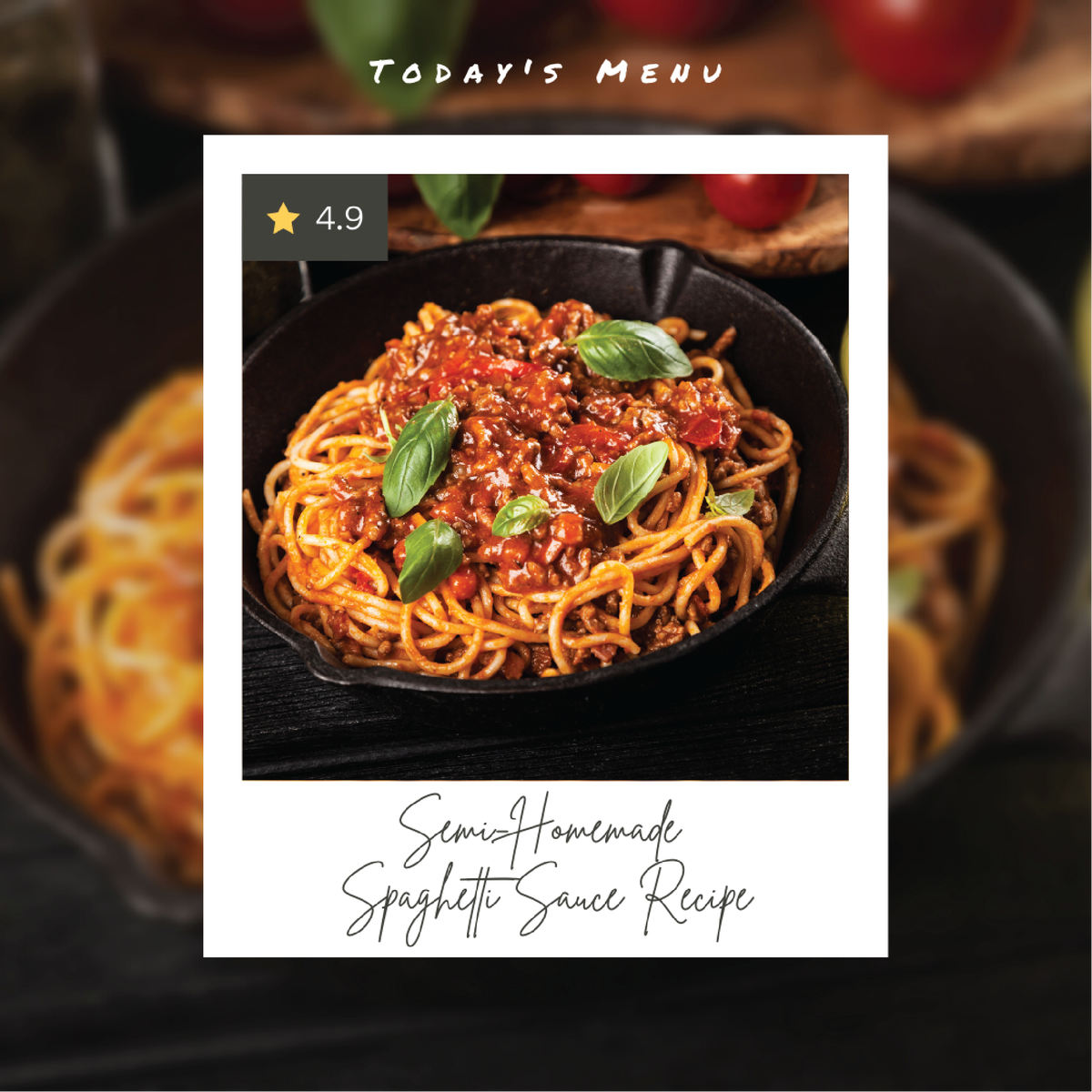It’s Worth the Trip! Semi-Homemade Spaghetti Sauce

MyPlate encourages Americans to fill half of their plates with fruits and vegetables because research has proven that diets filled with them will assist with meeting weight goals, lower blood pressure, reduce the risk of heart disease and stroke, prevent some types of cancer, and lower the risk of eye and digestive problems. The amount of vegetables and fruits recommended per day varies depending on age, sex, and activity level; but, for the average adult, the combined minimum amount is about 5-6 cups per day. Just know that health experts aren’t encouraging healthy individuals to keep their intake below this amount. In fact, you would be hard-pressed to find some say that eating too many fruits and vegetables is bad for them. Building your diet with mostly fruits and vegetables is a healthy choice.
Aiming to eat a variety (“Eating a Rainbow”) of fruits and vegetables is just as important as the overall amount consumed. This is because no single fruit or vegetable provides all the nutrients the body needs. Because fruits tend to be higher in calories than vegetables, increasing the variety with mainly vegetables is a great strategy to keep calories balanced. Just be sure to also eat some fruits.
Based on their nutrients, vegetables are organized into 5 subgroups: darkgreen, starchy, red and orange, beans and peas, and others. It isn’t necessary to eat vegetables from each subgroup daily. However, over the course of a week, the recommended amount of weekly intake from each subgroup should be consumed. All cooked, raw, canned and frozen varieties count toward meeting the weekly goals. One cup of raw or cooked vegetables or vegetable juice, or 2 cups of raw leafy greens, can be considered as 1 cup vegetables.
Each week, adults should aim to eat between 4-5 cups from the red and orange vegetable subgroup. Some of the key nutrients that the red and orange subgroup of vegetables provides your body with vitamins A, C, and potassium. Vitamin A helps to promote healthy eyes, skin, hair and teeth and strong immune system. Vitamin C also keeps the teeth and gums healthy and keeps the immune system strong, while also helping with wound healing and the body’s absorption of iron. Dietary potassium lowers blood pressure and may reduce the risk of kidney stones.
This meal features a semi-homemade “starter” marinara sauce that will help you in meeting the recommended weekly level for red/orange vegetables, while also keeping the sodium and sugar levels in check. Have fun with this sauce by using it in other meals and adding more vegetables, like peppers, zucchini, eggplant, or mushrooms, etc.
Ingredients
Over medium heat, begin cooking about 3⁄4 pound of lean ground meat (at least 90% lean beef, chicken or turkey), stirring occasionally.
Begin cooking 12 oz. whole wheat or whole grain pasta, according to package directions
While the pasta and ground meat are cooking, in another large sauce pan, pour a 14.5 oz. can of no added salt, stewed tomatoes (Italian-basil, garlic, oregano), 2-8 oz. cans of plain tomato sauce, and 1 small can of tomato paste, 1⁄2 tsp. of garlic powder and 1 tsp. of dried Italian seasoning blend.
Over medium-high heat, mix the sauce well, while mashing the large pieces of tomatoes against the side of the pan. Let the sauce simmer for about 5 minutes, while stirring occasionally.
Drain the grease from the ground meat, and discard the grease. Carefully pour the ground meat into the sauce and mix well. Turn the heat to medium and cook for an additional 5 minutes until the flavor blends.
For each plate, serve 1/4th of the drained pasta, topped with 1/4th of the sauce, sprinkle of grated parmesan cheese and chopped fresh basil (optional).
To make the meal complete, serve 4 – 6 oz. of vanilla Greek yogurt topped with a handful of your favorite berries or fresh sliced peaches.
Directions
Use pasta made from vegetables to help meet the recommended level of weekly consumption.
Use the tomato sauce as a base in home-made lasagna or as a dipping sauce.
Make a double batch of the sauce and freeze 1⁄2 of it, so you will have it at the ready for a quick meal. All you‘ll have to do is microwave it to thaw and heat, while the pasta is cooking.
Stay Connected with FamilyMedia!
Join our community! Enter your email to stay connected with Family Media.








